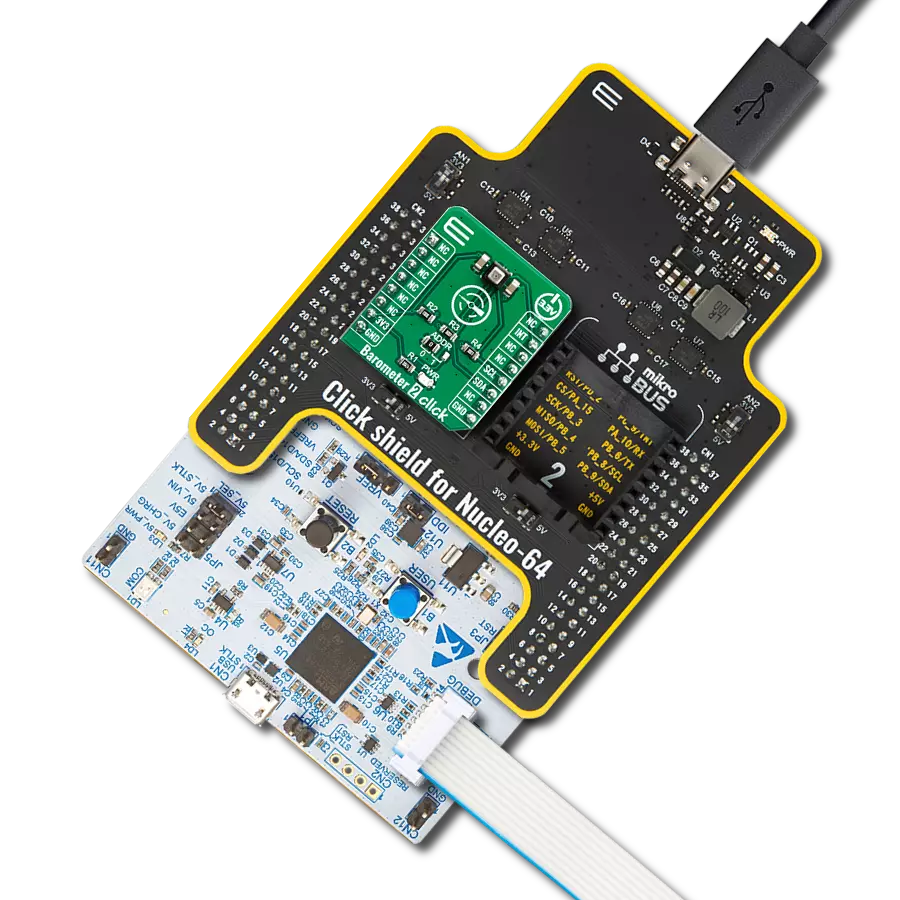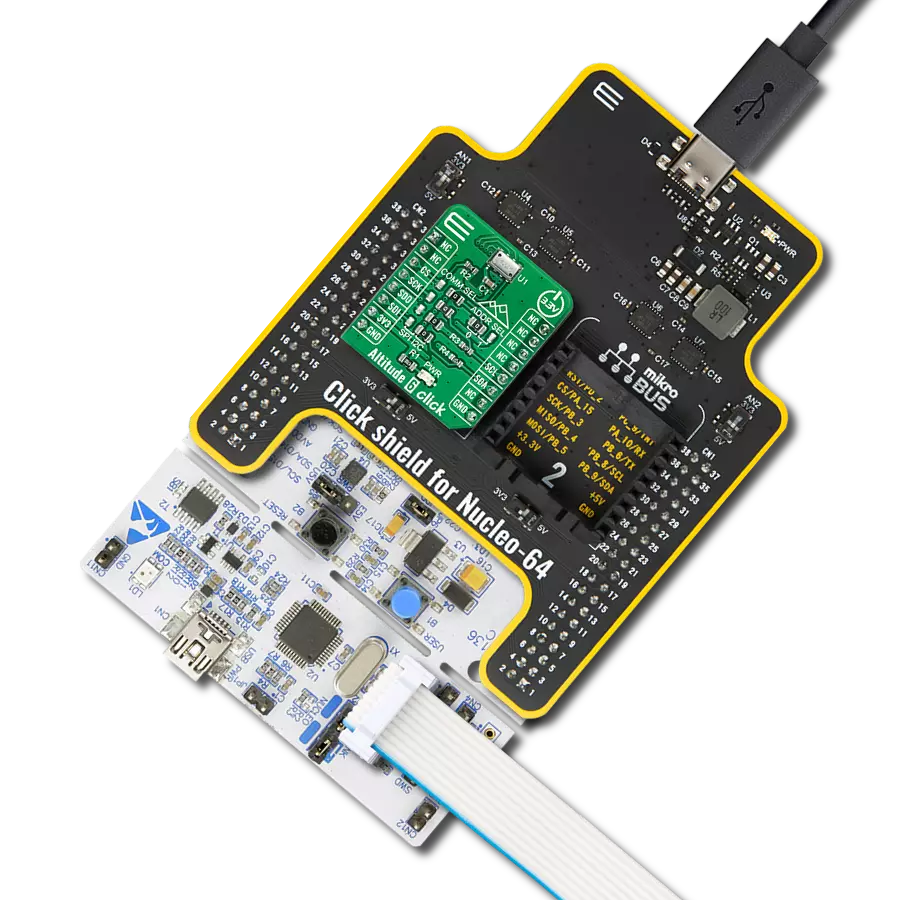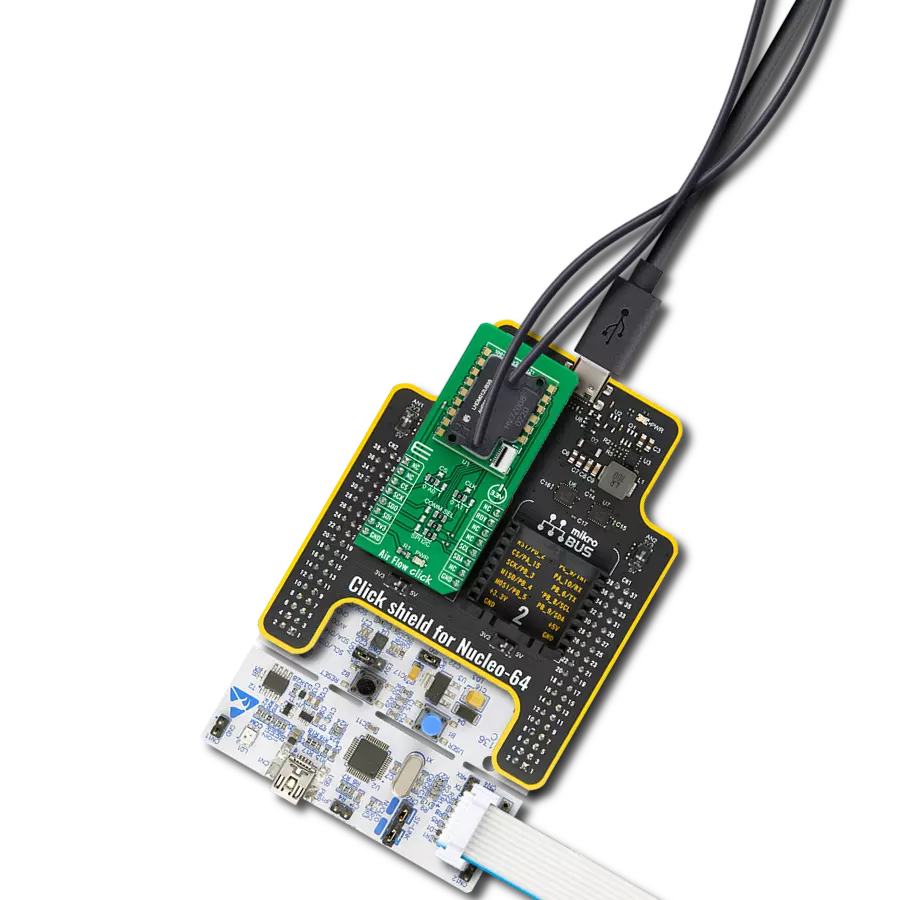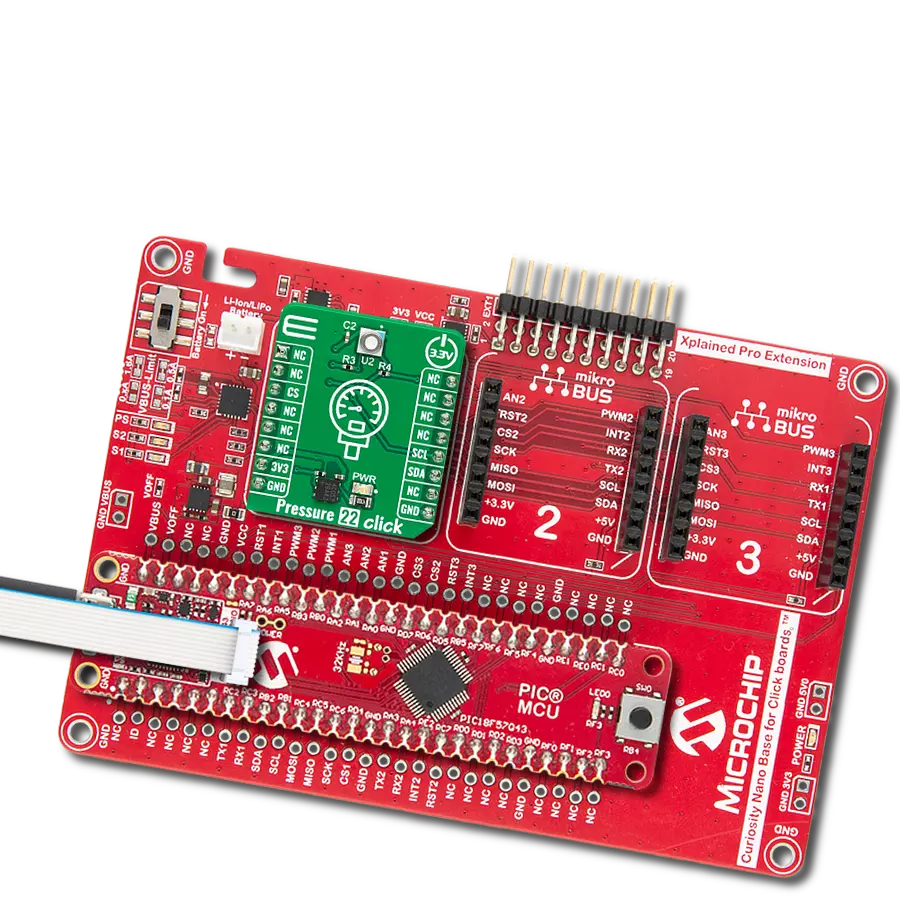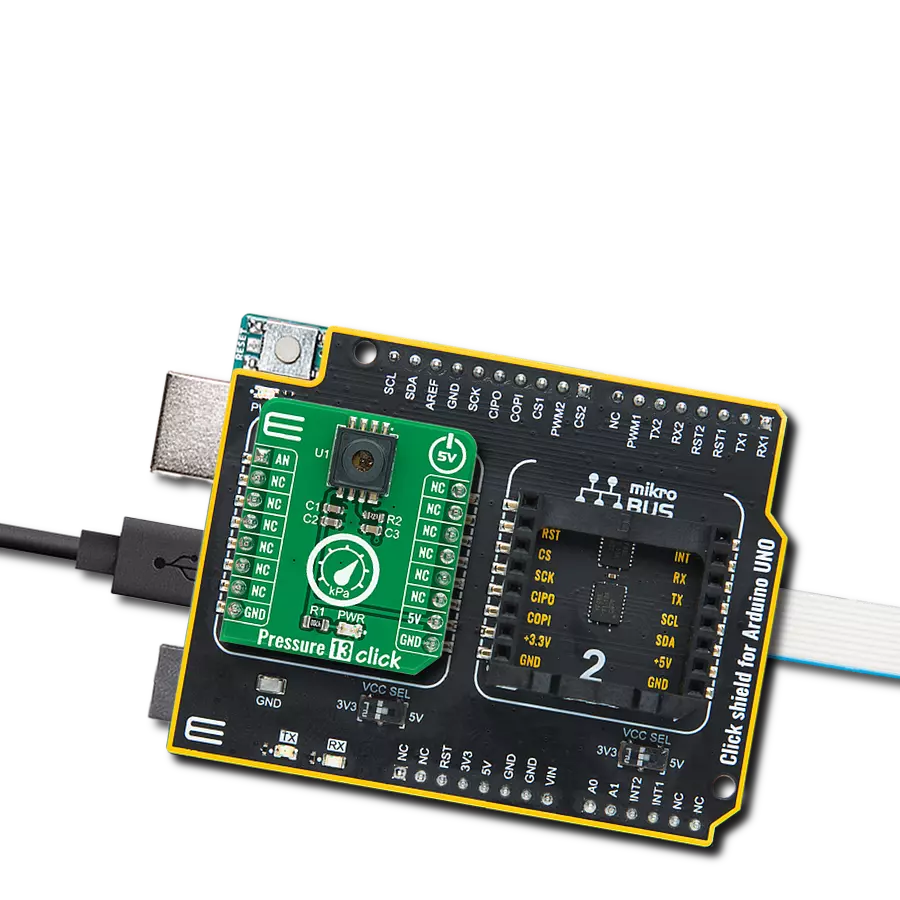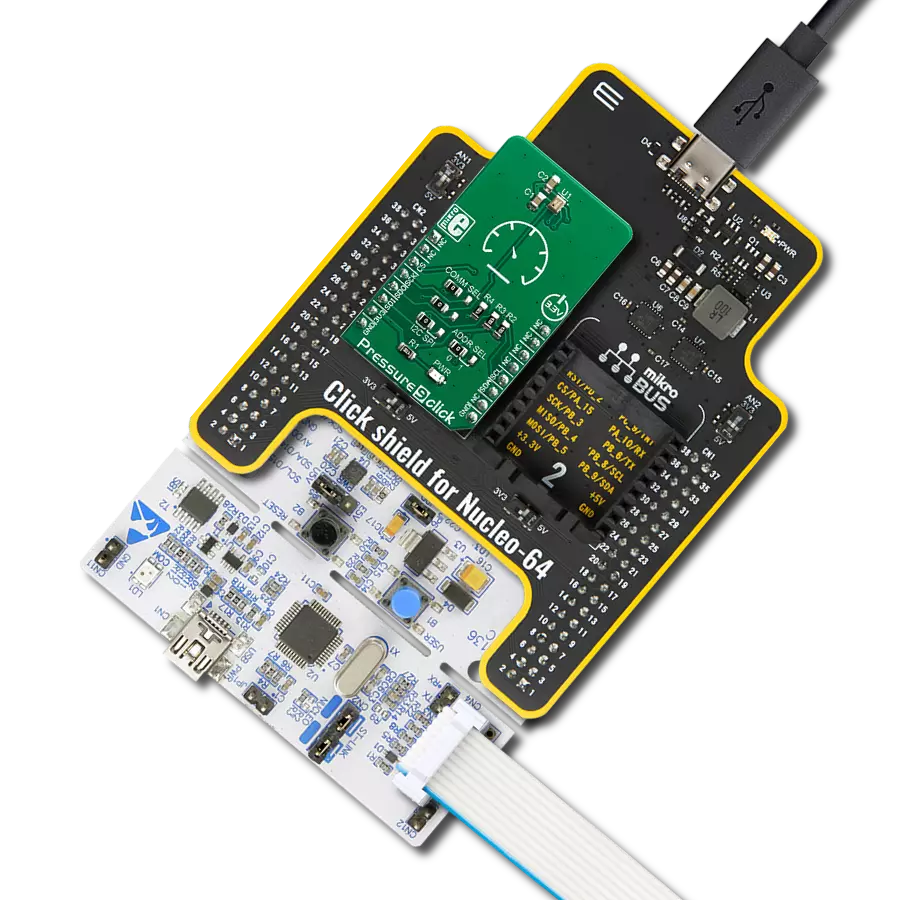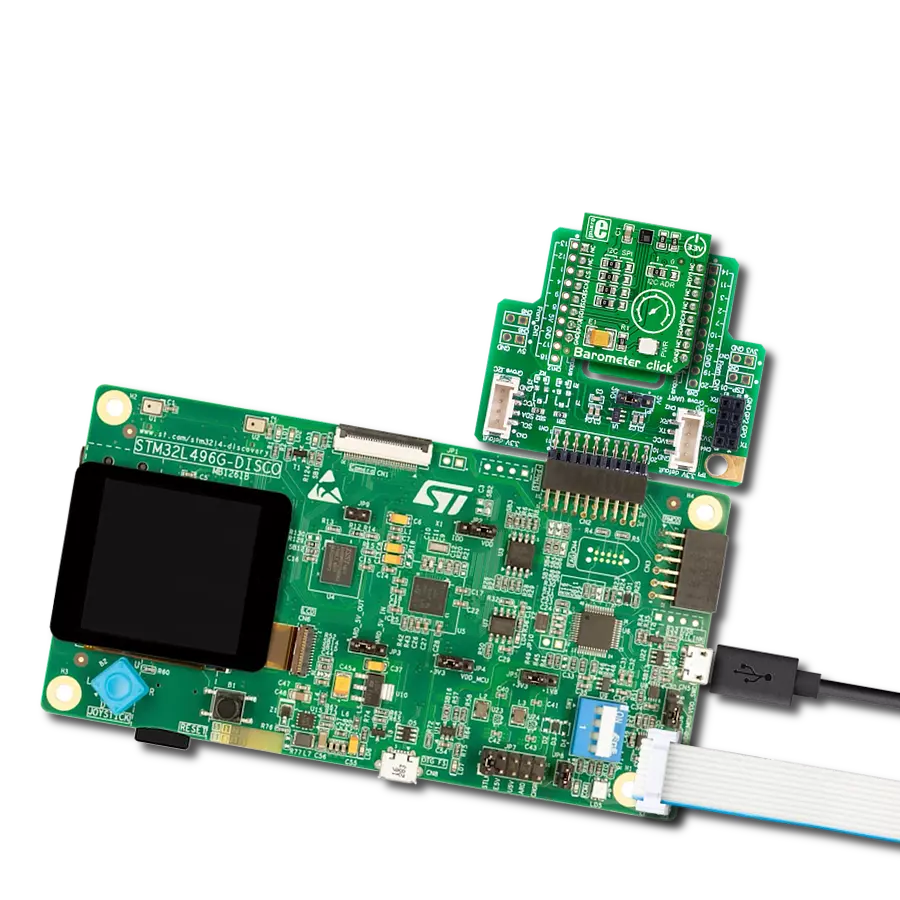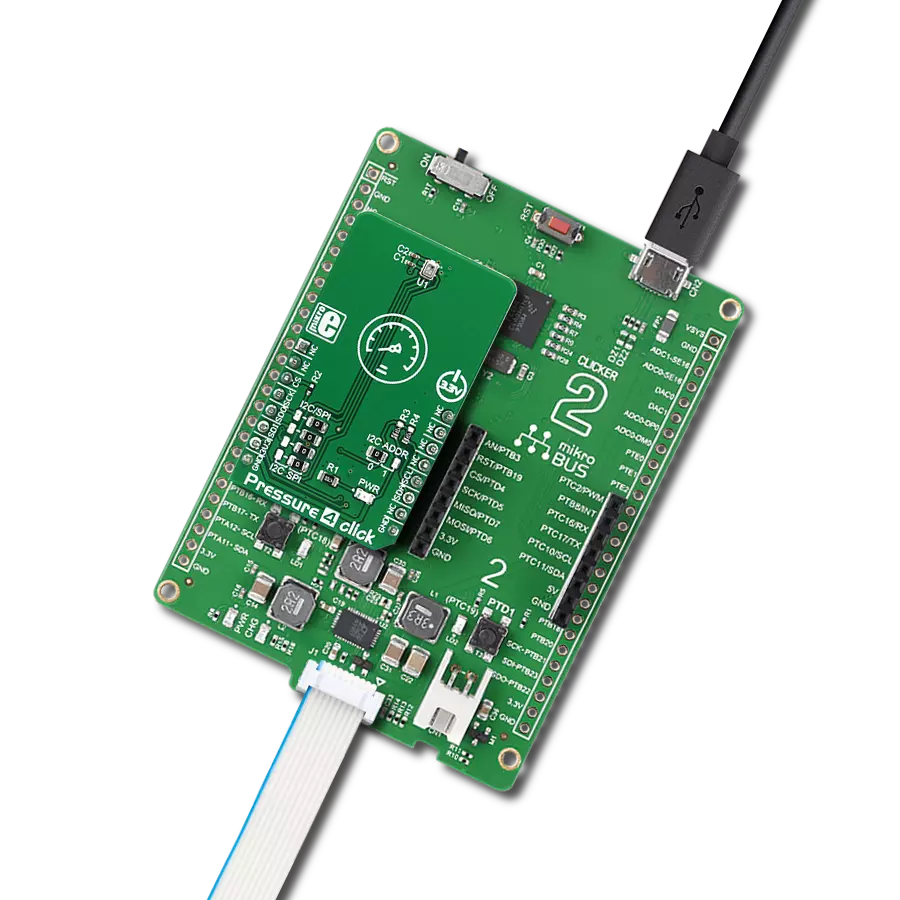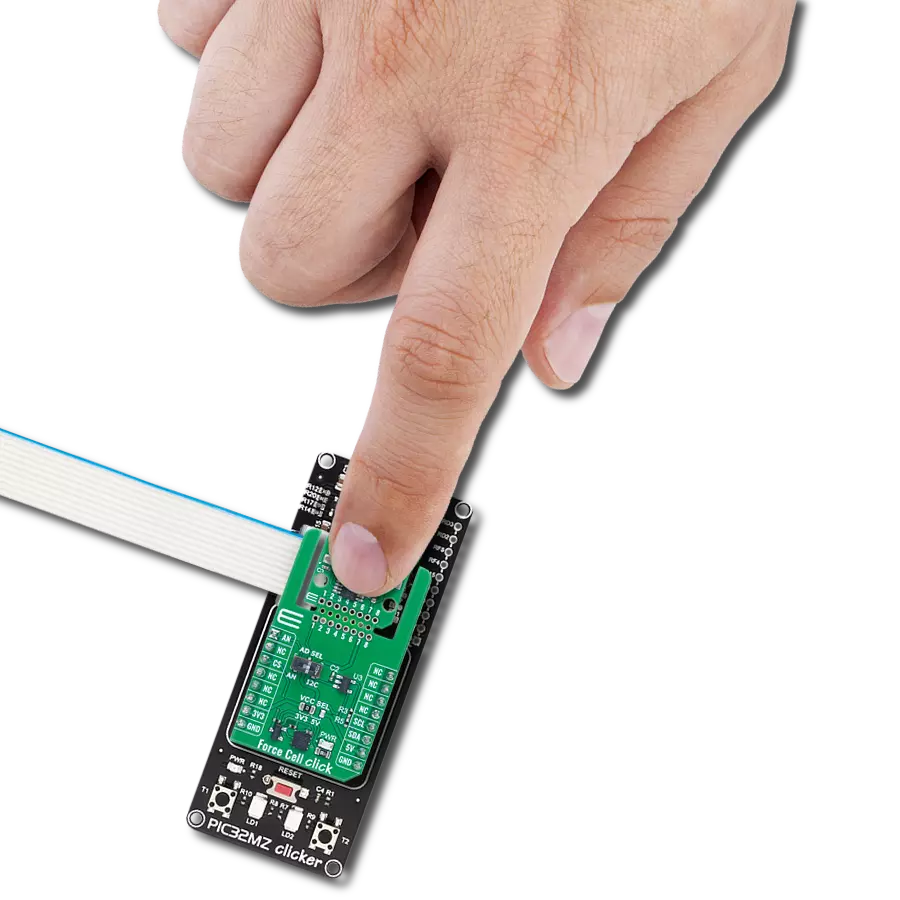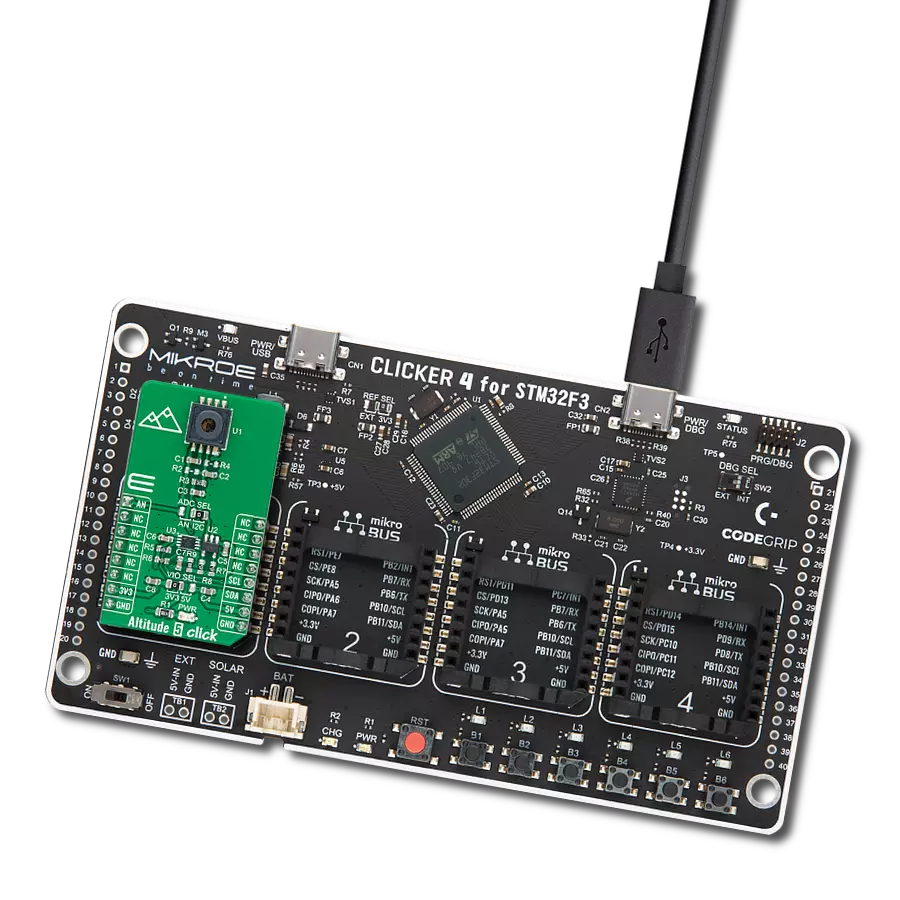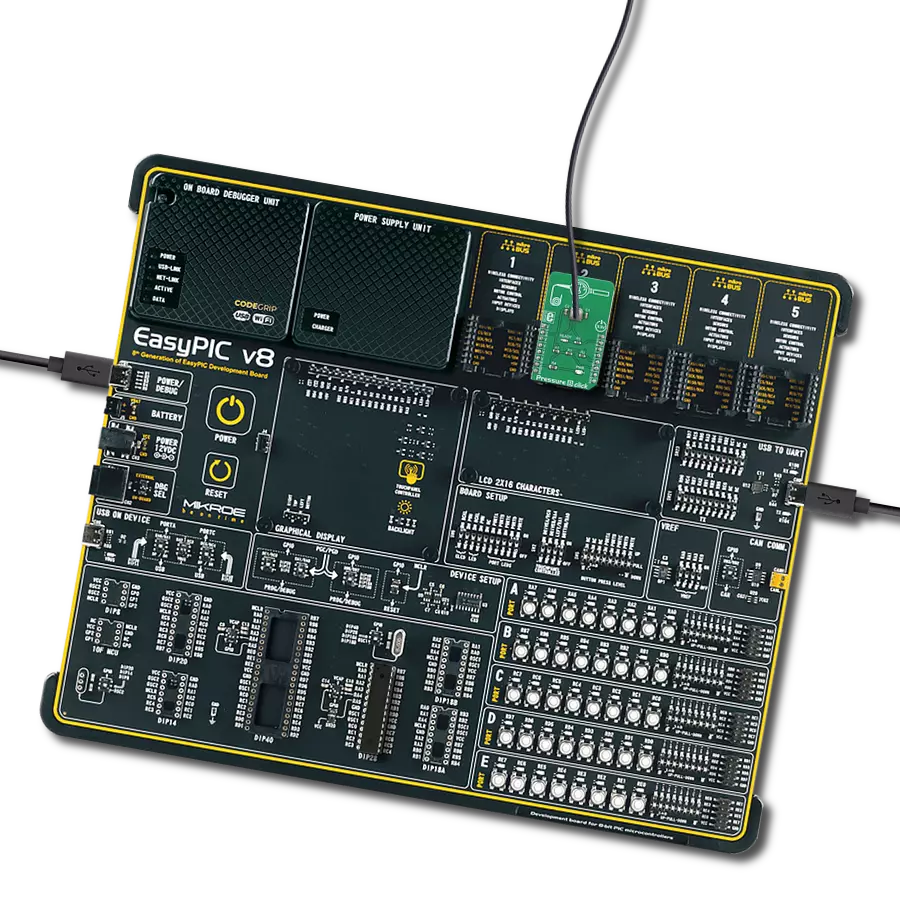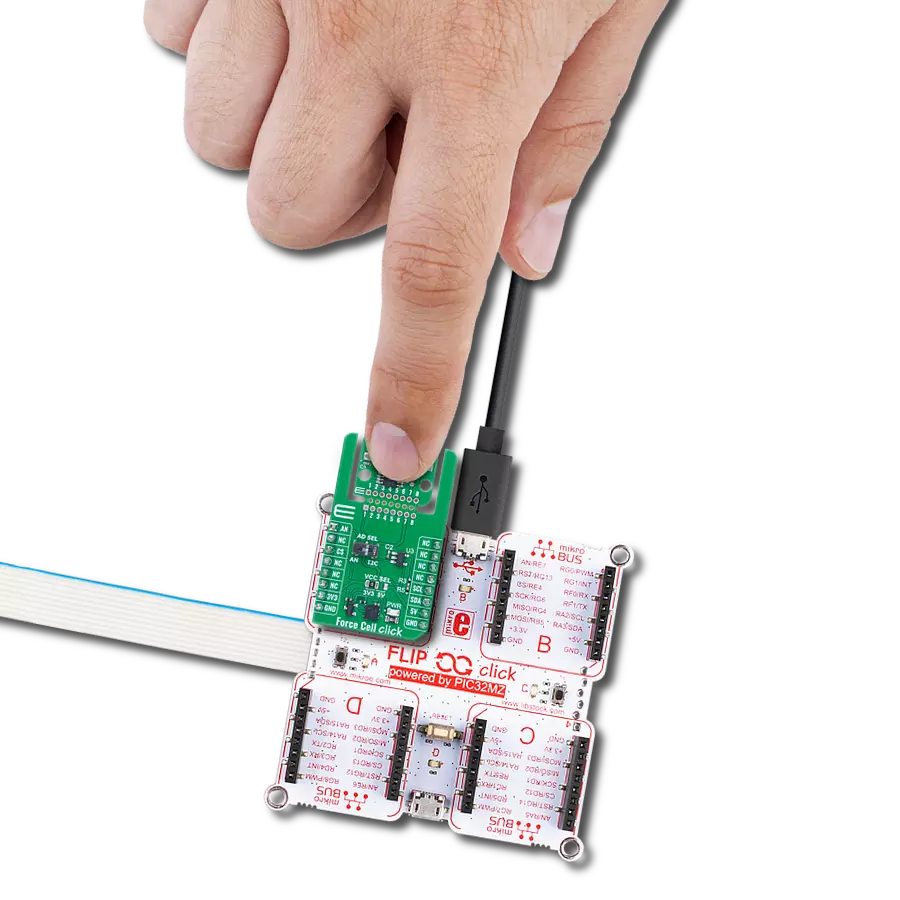Measure pressure accurately, with a typical relative accuracy of ±0.1mbar and an absolute accuracy of ±2mbar, even when subjected to high pressures
A
A
Hardware Overview
How does it work?
Pressure Click is based on the LPS331AP, a high accuracy, low-power 24-bit absolute barometric pressure sensor from STMicroelectronics. The LPS331AP provides a typical relative accuracy over pressure of ±0.1mbar and absolute accuracy of ±2mbar with high overpressure capability. It measures absolute pressure from 260mbar to 1260mbar over a wide operating temperature range. The complete device includes a sensing element based on a piezoresistive Wheatstone bridge and an interface that takes the information from the sensing element to the host MCU as a digital signal. The sensing element consists of a suspended membrane realized inside a single mono-silicon substrate capable of detecting
pressure, manufactured using a dedicated process developed by ST called VENSENS. This process allows building of a mono-silicon membrane above an air cavity with a controlled gap and defined pressure. On the other hand, the LPS331AP's interface is manufactured using a standard CMOS process and factory calibrated at three temperatures and two pressures for sensitivity and accuracy. Pressure Click allows using both I2C and SPI interfaces. The selection can be made by positioning SMD jumpers labeled as COMM SEL in an appropriate position. Note that all the jumpers' positions must be on the same side, or the Click board™ may become unresponsive. While the I2C interface is selected, the LPS331AP allows
choosing the least significant bit (LSB) of its I2C slave address using the SMD jumper labeled I2C ADD. This Click board™ also possesses an additional interrupt pin, routed to the INT pin on the mikroBUS™ socket, indicating when a specific pressure event occurs. This Click board™ can only be operated with a 3.3V logic voltage level. The board must perform appropriate logic voltage level conversion before using MCUs with different logic levels. Also, this Click board™ comes equipped with a library containing easy-to-use functions and an example code that can be used as a reference for further development.
Features overview
Development board
Nucleo 32 with STM32F031K6 MCU board provides an affordable and flexible platform for experimenting with STM32 microcontrollers in 32-pin packages. Featuring Arduino™ Nano connectivity, it allows easy expansion with specialized shields, while being mbed-enabled for seamless integration with online resources. The
board includes an on-board ST-LINK/V2-1 debugger/programmer, supporting USB reenumeration with three interfaces: Virtual Com port, mass storage, and debug port. It offers a flexible power supply through either USB VBUS or an external source. Additionally, it includes three LEDs (LD1 for USB communication, LD2 for power,
and LD3 as a user LED) and a reset push button. The STM32 Nucleo-32 board is supported by various Integrated Development Environments (IDEs) such as IAR™, Keil®, and GCC-based IDEs like AC6 SW4STM32, making it a versatile tool for developers.
Microcontroller Overview
MCU Card / MCU

Architecture
ARM Cortex-M0
MCU Memory (KB)
32
Silicon Vendor
STMicroelectronics
Pin count
32
RAM (Bytes)
4096
You complete me!
Accessories
Click Shield for Nucleo-32 is the perfect way to expand your development board's functionalities with STM32 Nucleo-32 pinout. The Click Shield for Nucleo-32 provides two mikroBUS™ sockets to add any functionality from our ever-growing range of Click boards™. We are fully stocked with everything, from sensors and WiFi transceivers to motor control and audio amplifiers. The Click Shield for Nucleo-32 is compatible with the STM32 Nucleo-32 board, providing an affordable and flexible way for users to try out new ideas and quickly create prototypes with any STM32 microcontrollers, choosing from the various combinations of performance, power consumption, and features. The STM32 Nucleo-32 boards do not require any separate probe as they integrate the ST-LINK/V2-1 debugger/programmer and come with the STM32 comprehensive software HAL library and various packaged software examples. This development platform provides users with an effortless and common way to combine the STM32 Nucleo-32 footprint compatible board with their favorite Click boards™ in their upcoming projects.
Used MCU Pins
mikroBUS™ mapper
Take a closer look
Click board™ Schematic

Step by step
Project assembly
Software Support
Library Description
This library contains API for Pressure Click driver.
Key functions:
pressure_generic_single_write- Generic Single Write functionpressure_generic_multiple_read- Generic Multiple Read functionpressure_get_pressure- Pressure Get function
Open Source
Code example
The complete application code and a ready-to-use project are available through the NECTO Studio Package Manager for direct installation in the NECTO Studio. The application code can also be found on the MIKROE GitHub account.
/*!
* \file main.c
* \brief Pressure Click example
*
* # Description
* This is a example which demonstrates the use of Pressure Click board.
* Measured pressure and temperature data from the LPS331AP sensor on Pressure
* Click.
*
* The demo application is composed of two sections :
*
* ## Application Init
* Initializes I2C/SPI serial interface and puts a device to the initial state.
* Also initializes UART console module for results logging.
*
* ## Application Task
* Reads the pressure and temperature results in standard units when
* measurement was done and sends results to the console (usb uart terminal).
* Repeats operation every 500ms.
*
* \author Nemanja Medakovic
*
*/
// ------------------------------------------------------------------- INCLUDES
#include "board.h"
#include "log.h"
#include "pressure.h"
// ------------------------------------------------------------------ VARIABLES
static pressure_t pressure;
static log_t console;
static const uint8_t deg_cels[ 3 ] = { 176, 'C', 0 };
// ------------------------------------------------------ APPLICATION FUNCTIONS
void application_init( void )
{
pressure_cfg_t pressure_cfg;
log_cfg_t console_cfg;
/**
* Logger initialization.
* Default baud rate: 115200
* Default log level: LOG_LEVEL_DEBUG
* @note If USB_UART_RX and USB_UART_TX
* are defined as HAL_PIN_NC, you will
* need to define them manually for log to work.
* See @b LOG_MAP_USB_UART macro definition for detailed explanation.
*/
LOG_MAP_USB_UART( console_cfg );
log_init( &console, &console_cfg );
log_info( &console, "---- Application Init ----" );
// Click initialization.
pressure_cfg_setup( &pressure_cfg );
PRESSURE_MAP_MIKROBUS( pressure_cfg, MIKROBUS_1 );
pressure_init( &pressure, &pressure_cfg );
pressure_sw_reset( &pressure );
pressure_default_cfg( &pressure );
}
void application_task( void )
{
uint8_t status;
float press;
float temp;
status = pressure_get_status( &pressure, PRESSURE_FLAG_MASK_P_DATA_RDY |
PRESSURE_FLAG_MASK_T_DATA_RDY );
while ( !status )
{
status = pressure_get_status( &pressure, PRESSURE_FLAG_MASK_P_DATA_RDY |
PRESSURE_FLAG_MASK_T_DATA_RDY );
}
press = pressure_get_pressure( &pressure );
temp = pressure_get_temperature( &pressure );
log_printf( &console, "** Pressure is %.2f mbar\r\n", press );
log_printf( &console, "** Temperature is %.2f ", temp );
log_printf( &console, "%s\r\n", deg_cels );
log_printf( &console, "**************************************\r\n" );
Delay_ms ( 500 );
}
int main ( void )
{
/* Do not remove this line or clock might not be set correctly. */
#ifdef PREINIT_SUPPORTED
preinit();
#endif
application_init( );
for ( ; ; )
{
application_task( );
}
return 0;
}
// ------------------------------------------------------------------------ END
Additional Support
Resources
Category:Pressure



















